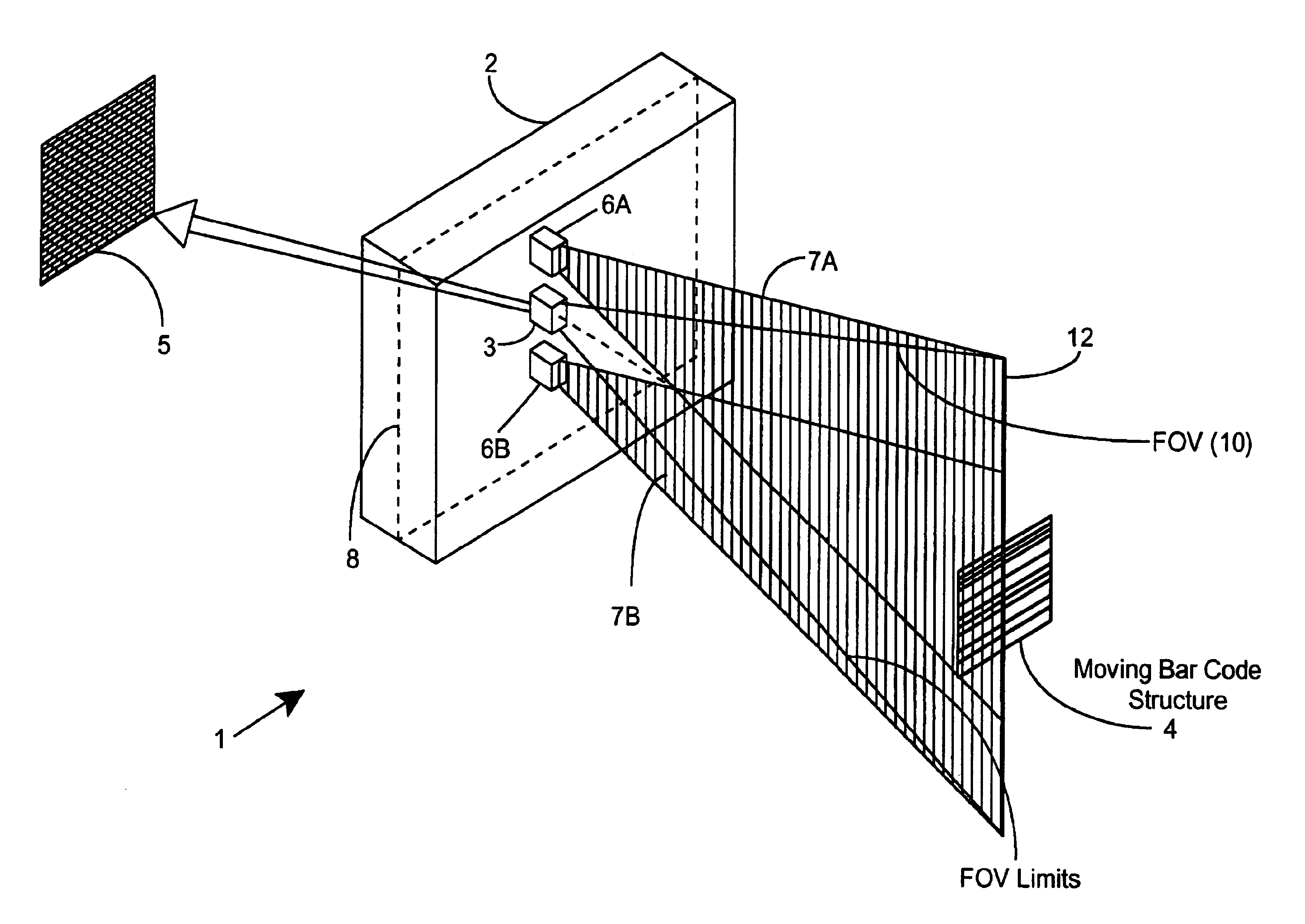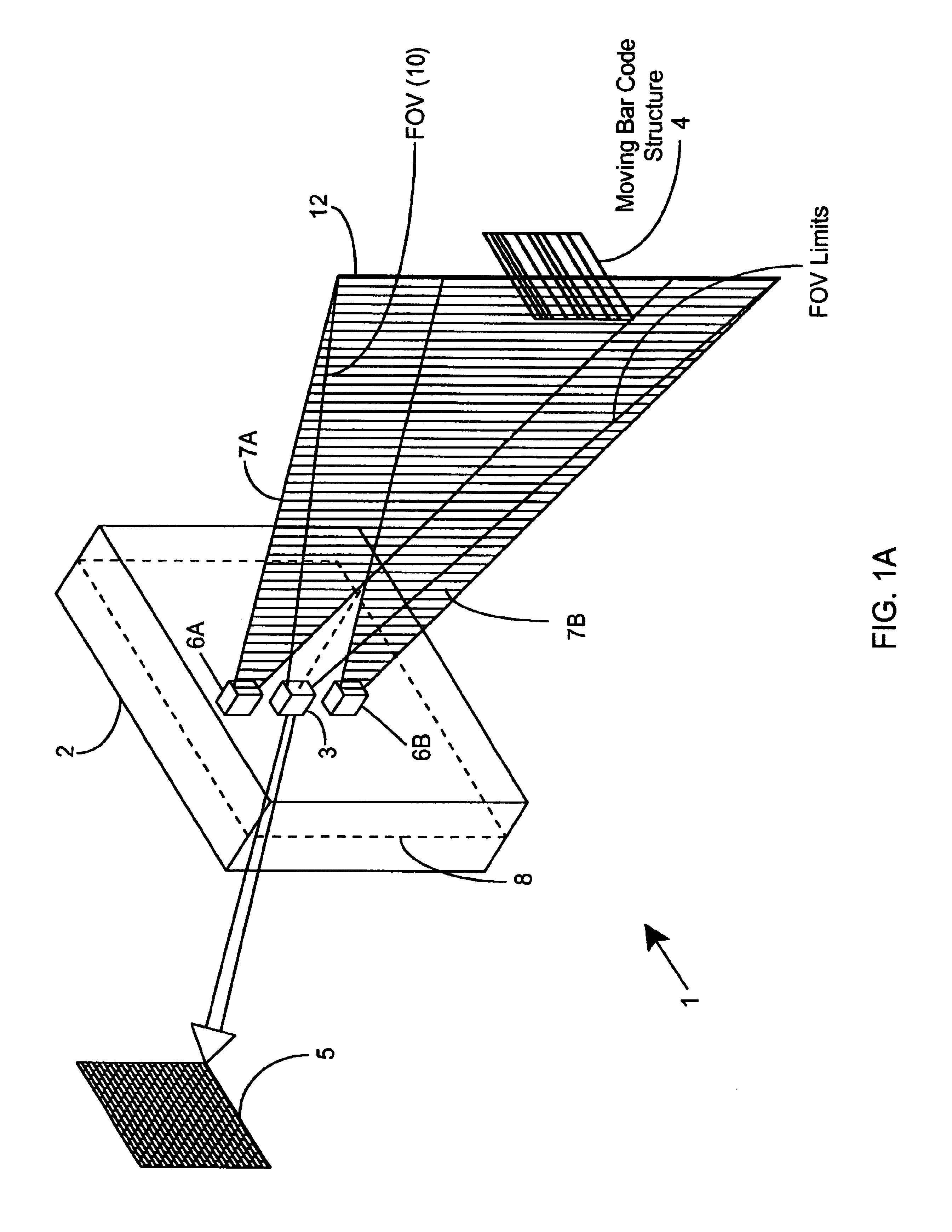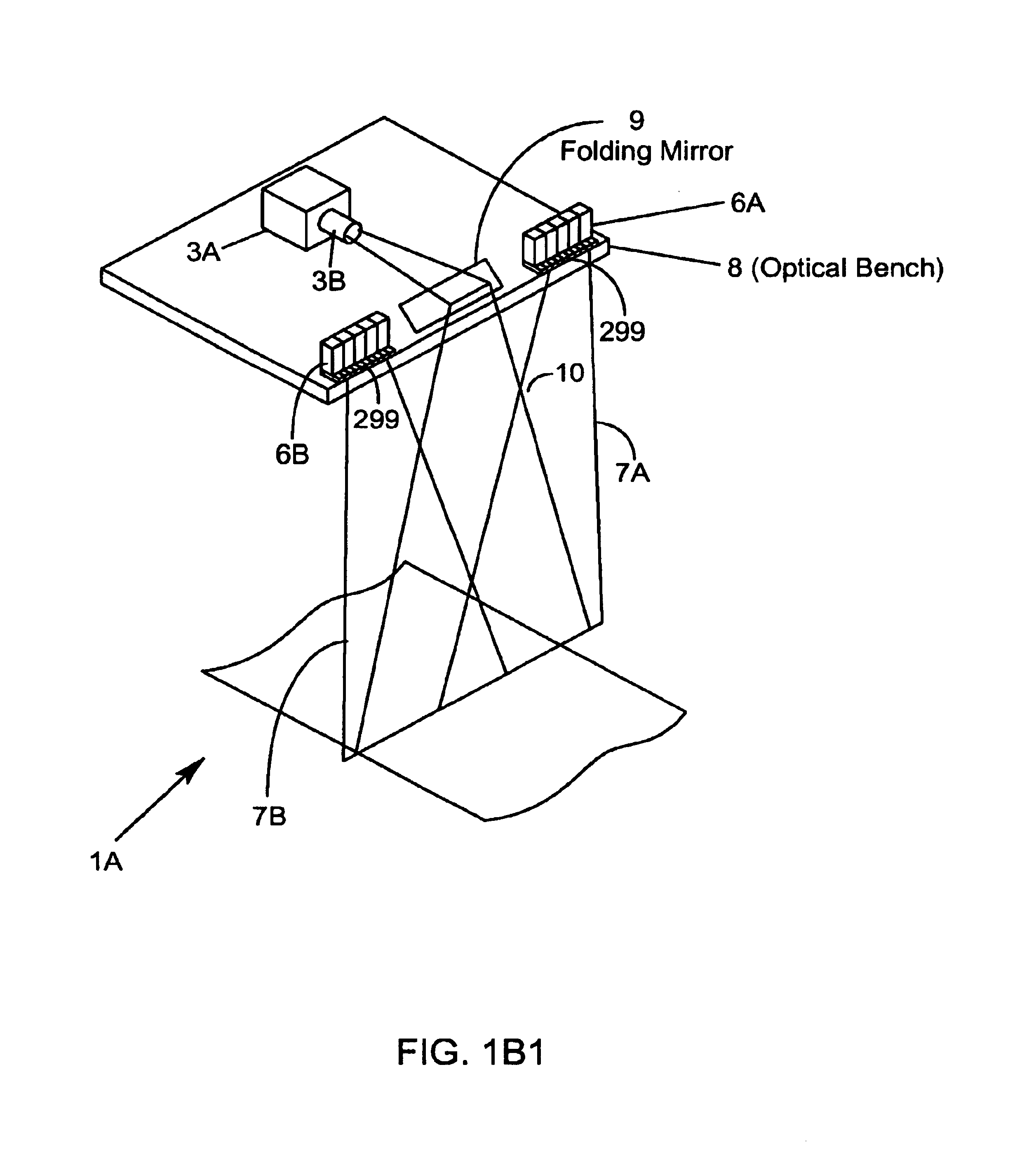Method of and system for producing digital images of objects with subtantially reduced speckle-noise patterns by illuminating said objects with spatially and/or temporally coherent-reduced planar laser illumination
a planar laser and a technology of subtantially reduced speckle noise, applied in semiconductor lasers, electromagnetic radiation sensing, instruments, etc., can solve the problems of large, heavy and expensive, and the balance of output illumination power is simply wasted in heat, and the cost, size and weight of such scanning devices increas
- Summary
- Abstract
- Description
- Claims
- Application Information
AI Technical Summary
Problems solved by technology
Method used
Image
Examples
first generalized embodiment
of the PLIIM System of the Present Invention
The first generalized embodiment of the PLIIM system of the present invention 1 is illustrated in FIG. 1A. As shown therein, the PLIIM system 1 comprises: a housing 2 of compact construction; a linear (i.e. 1-dimensional) type image formation and detection (IFD) 3 including a 1-D electronic image detection array 3A, and a linear (1-D) imaging subsystem (LIS) 3B having a fixed focal length, a fixed focal distance, and a fixed field of view (FOV), for forming a 1-D image of an illuminated object 4 located within the fixed focal distance and FOV thereof and projected onto the 1-D image detection array 3A, so that the 1-D image detection array 3A can electronically detect the image formed thereon and automatically produce a digital image data set 5 representative of the detected image for subsequent image processing; and a pair of planar laser illumination arrays (PLIAs) 6A and 6B, each mounted on opposite sides of the IFD module 3, such that ...
third generalized embodiment
of the PLIIM System of the Present Invention
The third generalized embodiment of the PLIIM system of the present invention 40 is illustrated in FIG. 2A. As shown therein, the PLIIM system 40 comprises: a housing 2 of compact construction; a linear (i.e. 1-dimensional) type image formation and detection (IFD) module 3' including a 1-D electronic image detection array 3A, a linear (1-D) imaging subsystem (LIS) 3B' having a fixed focal length, a variable focal distance, and a fixed field of view (FOV), for forming a 1-D image of an illuminated object located within the fixed focal distance and FOV thereof and projected onto the 1-D image detection array 3A, so that the 1-D image detection array 3A can electronically detect the image formed thereon and automatically produce a digital image data set 5 representative of the detected image for subsequent image processing; and a pair of planar laser illumination arrays (PLIAs) 6A and 6B, each mounted on opposite sides of the IFD module 3', s...
fourth generalized embodiment
of the PLIM System of the Present Invention
The fourth generalized embodiment of the PLIIM system 40' of the present invention is illustrated in FIGS. 2I1 and 2I2. As shown in FIG. 2I1, the PLIIM system 40' comprises: a housing 2 of compact construction; a linear (i.e. 1-dimensional) type image formation and detection (IFD) module 3'; and a pair of planar laser illumination arrays (PLIAs) 6A and 6B mounted on opposite sides of the IFD module 3'. During system operation, laser illumination arrays 6A and 6B each produce a moving planar laser illumination beam 12' which synchronously moves and is disposed substantially coplanar with the field of view (FOV) of the image formation and detection module 3', so as to scan a bar code symbol or other graphical structure 4 disposed stationary within a 3-D scanning region.
As shown in FIGS. 2I2 and 2I3, the PLIIM system of FIG. 2I1 comprises: an image formation and detection module 3' having an imaging subsystem 3B' with a fixed focal length imag...
PUM
 Login to View More
Login to View More Abstract
Description
Claims
Application Information
 Login to View More
Login to View More - R&D
- Intellectual Property
- Life Sciences
- Materials
- Tech Scout
- Unparalleled Data Quality
- Higher Quality Content
- 60% Fewer Hallucinations
Browse by: Latest US Patents, China's latest patents, Technical Efficacy Thesaurus, Application Domain, Technology Topic, Popular Technical Reports.
© 2025 PatSnap. All rights reserved.Legal|Privacy policy|Modern Slavery Act Transparency Statement|Sitemap|About US| Contact US: help@patsnap.com



